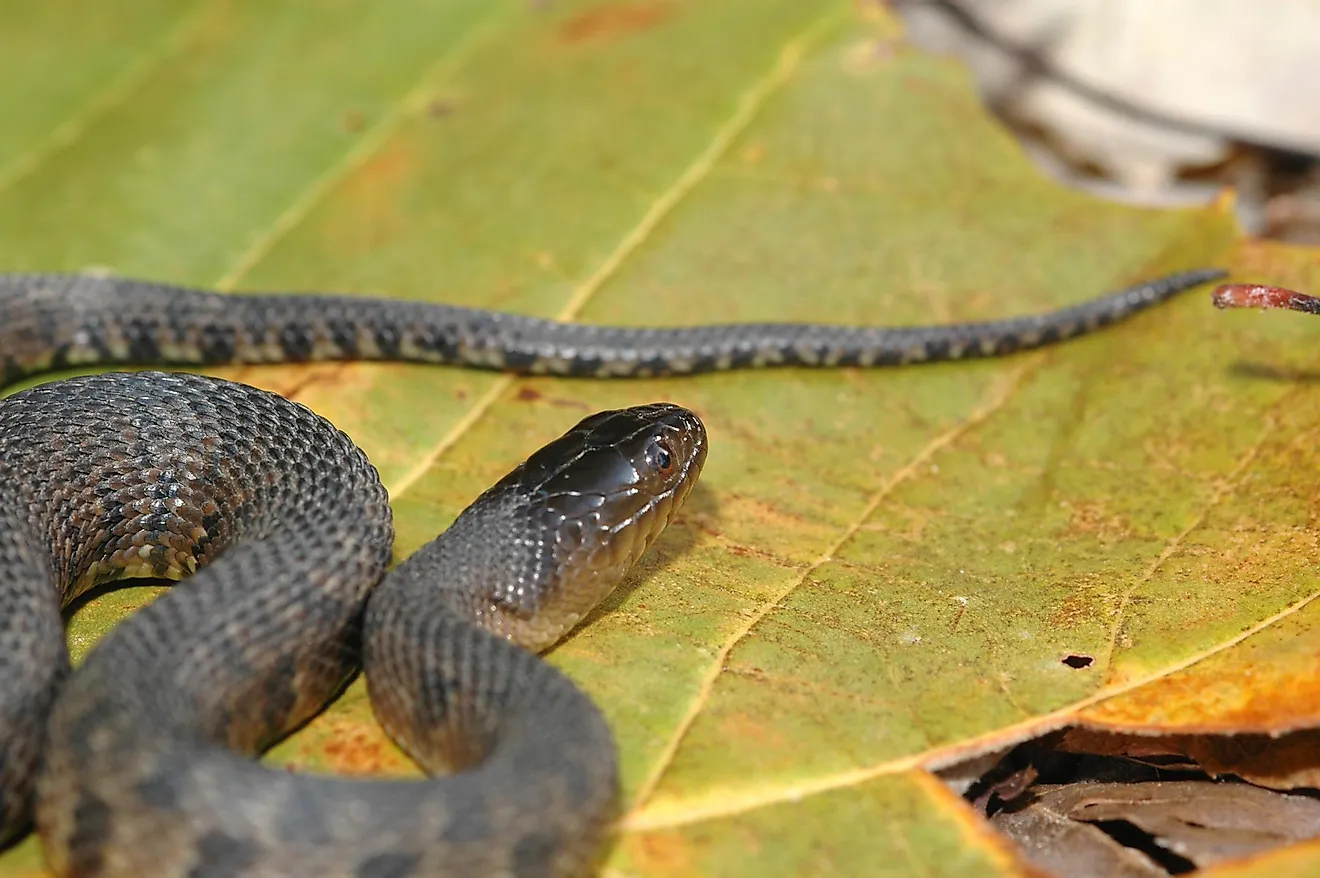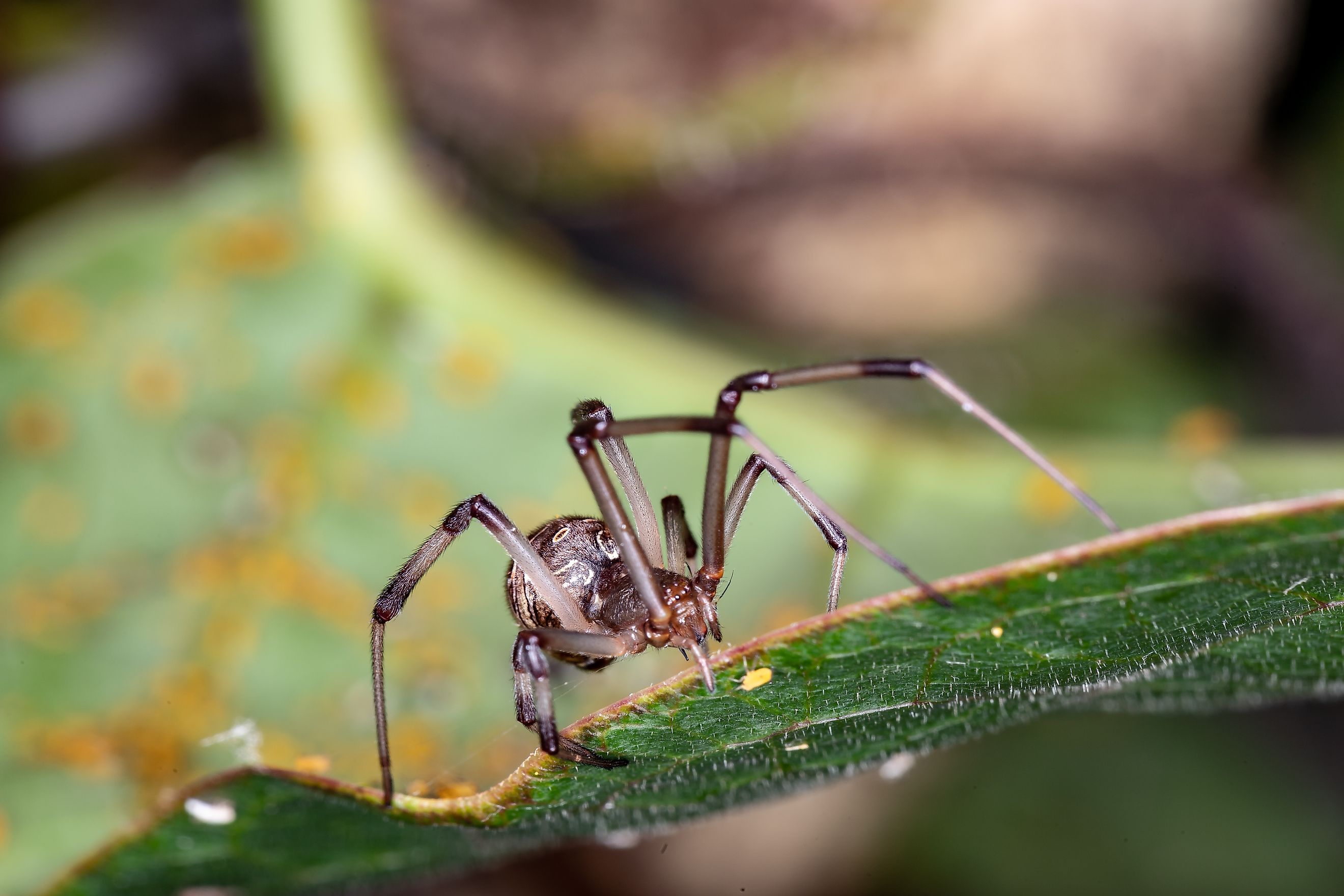
4 Most Venomous Spiders in Missouri
Spiders are as essential to the state of Missouri as the Mississippi River and rolling Ozark mountains are to its iconic landscape. Missouri has over 300 species of spiders that quietly weave their webs in forests, fields, and hidden corners of homes. Home to an array of species, from the quiet, unassuming orb weavers to the reclusive brown recluse, spiders in the Show-Me State carry a subtle allure tinged with respect and a hint of danger.
Notably, Missouri is home to two venomous spider genera: the recluse spider genus Loxosceles and the widow spider genus Latrodectus, both of which add an element of caution for those who encounter them. Understanding the characteristics and behaviors of these venomous species is crucial for staying safe in Missouri's diverse landscapes, where encounters, though rare, can happen. Let’s take a closer look at the venomous spiders in the state.
Brown Recluse (Loxosceles reclusa)
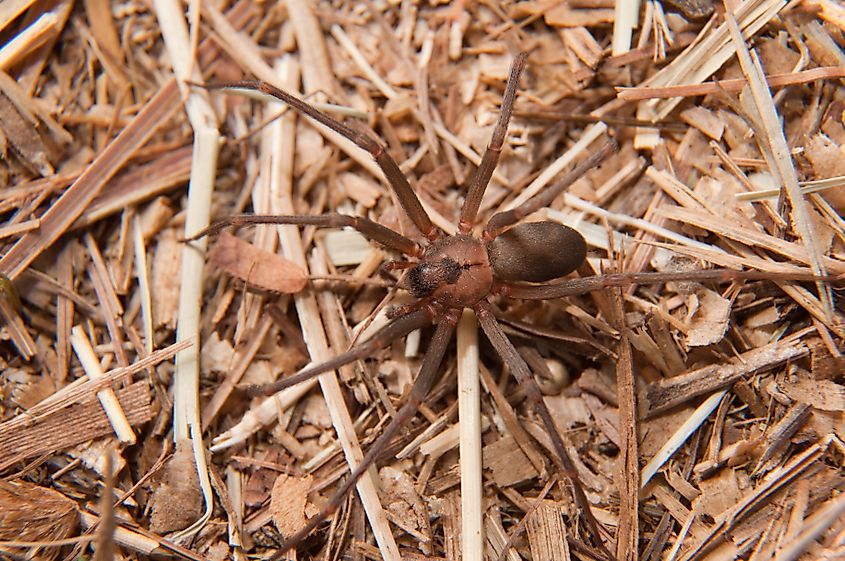
Of the 11 Loxosceles spiders in the United States, Loxosceles reclusa is the only one found in Missouri. These spiders are rarely found outside their range in the south-central and central midwestern states. The brown recluse is the most well-known common venomous spider to venture indoors. In Kansas City, brown recluse spiders are spotted mostly in older homes and businesses. They become more active between March and October, especially at night. Extreme heat can cause them to escape their undisturbed living areas (like attics and under porches) to more tolerable conditions inside the home. They are rarely out in the open, making it important to be cautious when handling items like boxes, piles of clothing, or shoes that are left untouched for long periods.
The Brown Recluse has several aliases. It is also known as the “violin spider,” “fiddleback spider,” or “fiddler spider” for the distinct violin-shaped dark brown marking on its head. Brown recluses hunt actively instead of waiting for prey to wander into their web, which is why humans more frequently encounter them. They are nocturnal, which decreases the odds of coming across them as they try to avoid human contact whenever possible.
If bitten, medical attention is neccessary and can cause severe necrosis. Symptoms at the bite site may start with pain, redness, swelling, itching, and burning. Within 1 to 3 days, the bite may resemble a “bull’s eye” appearance, but it can take up to 14 days to see the full effects of the bite. Seek medical attention if fever, rash, or flu-like symptoms occur.
Southern Black Widow (Latrodectus mactans)
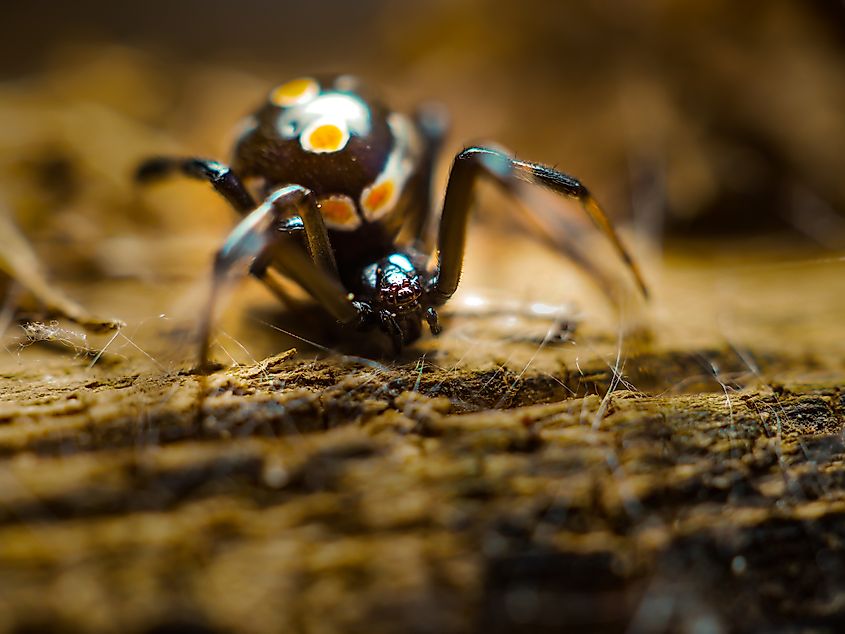
Latrodectus mactans - Southern Black Widow.
The southern black widow is found all over the eastern United States, most common in the southeast. Latrodectus mactans occur statewide throughout Missouri and are common in St. Louis. The southern black widow’s web does not resemble a typical spider's web. Instead, it resembles a cobweb of very strong white silk. Webs are often located under rocks, logs, or in large cracks and crevices—anywhere the web will be protected from the weather.
Southern black widow spiders are nocturnal and active at night. During the day, they spend most of the time hanging upside down in their web, which makes the hourglass marking immediately visible. Southern black widows are glossy jet-black with bright red hourglass markings on the underside of their abdomen. The hourglass of the spider is typically complete.
The spiders are not typically aggressive and often retreat into hiding. If they feel threatened, they will bite as a defensive mechanism; they are especially protective of their web when egg sacs are present. The bite typically becomes painful within 30 minutes to 2 hours, followed by muscle twitching near the bite site, which can lead to cramping in the shoulders, back, or stomach. Nausea, headache, anxiety, and changes in blood pressure may also occur. Untreated bites with venom (known as “wet bites”) can lead to necrosis, so it is a good idea to seek medical attention for a black widow bite.
Northern Black Widow (Latrodectus variolus)
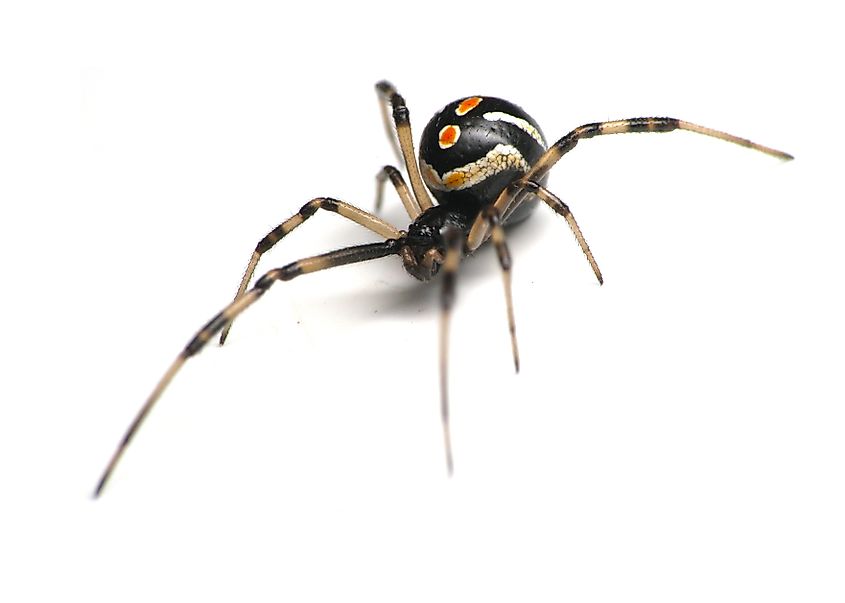
Northern Black Widow (Latrodectus variolus) isolated on a white background.
The northern black widow shares much of the same area as the southern black widow but is found more often in the northern United States. Outside, northern black widows are commonly found in protected areas under firewood, decks, hollow stumps, and rodent burrows. The northern black widow female makes her irregularly shaped, rather tangled web in old stumps, hollow logs, under fallen fence posts, or in abandoned animal burrows. The web has a tiny funnel into which the spider can retreat if bothered. Indoors, they are found in seldom-used areas of basements, crawlspaces, corners of sheds, and garages.
Latrodectus variolus looks very similar to latrodectus mactans, with one main difference. The hourglass marking on the underside of their abdomen is typically incomplete, with the bottom and top half separated. In addition to the broken hourglass marking, they have red or white spots, which can be faint or bold, down the middle of the back (the dorsal side, not the underside).
Despite how common widow spiders are, bites are infrequent because the shy spider tends to flee when disturbed. Venom from a bite can affect the central nervous system, but the bite's severity depends on the victim's age, the depth of the bite, and when the spider last injected her venom. Victims of bites feel pain almost immediately, increasing for 1 to 3 hours, but may last for 24 hours.
Brown Widow (Latrodectus geometricus)
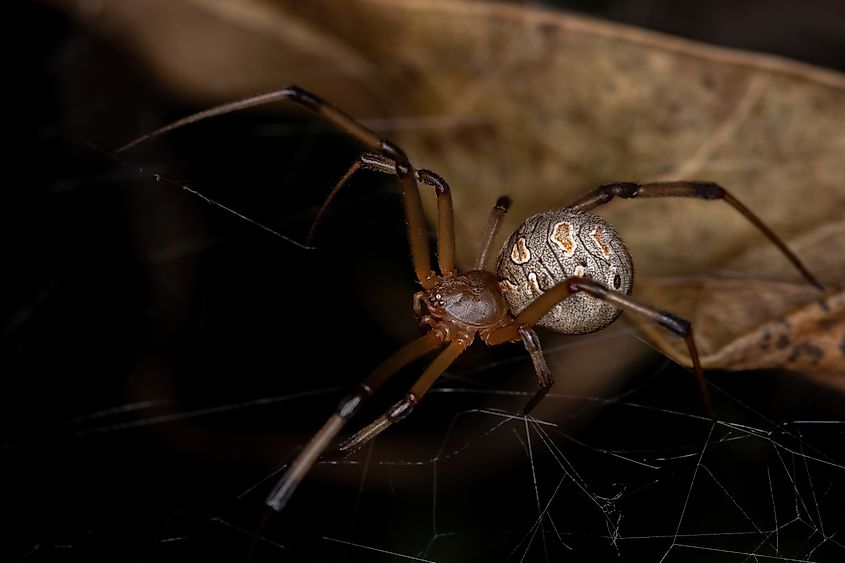
Female Adult Brown Widow of the species Latrodectus geometricus.
The brown widow is not native to the United States and was once only found in central and southern Florida. It has since expanded its territory and is now found in every southern state in the United States and some midwestern states like Missouri. Latrodectus geometricus builds its web in secluded, protected sites around homes and with woody vegetation and branches. Outside, some typical sites for web building include empty plant pots, mailboxes, storage sheds, and garages. They also like hiding in the recessed hand grips of plastic garbage cans, under outdoor furniture, and the corners of wrought iron railings.
Unlike its black and red-colored relatives, the coloring of a brown widow is pretty unremarkable: a mottling of brown and tan with black accents. It does have an hourglass-like marking, but it is a shade of orange. They are smaller in size than black widow spiders.
Latrodectus geometricus tend to be at a higher risk for human interaction because they choose more exposed places than sites chosen by black widows. Compared to that of a black widow, the bite of a brown widow spider is relatively minor simply because the spider cannot inject as much venom as its larger relatives. Symptoms of a brown widow bite are pain at the bite site and a red mark, not dissimilar to the bite of normal house spiders.
Summary
Missouri’s landscape hosts two primary venomous spider genera: the recluse spiders (Loxosceles) and widow spiders (Latrodectus). The brown recluse, Loxosceles reclusa, is the only species of its genus in Missouri, known for hiding in undisturbed areas of homes and venturing out mostly at night. Identified by a violin-shaped mark, it may cause severe necrosis if it bites. Missouri is also home to several widow spiders, including the southern black widow (Latrodectus mactans), with its signature red hourglass marking, and the brown widow, an introduced species with a subtler bite. Despite their venom, encounters are rare, and bites are seldom fatal.











